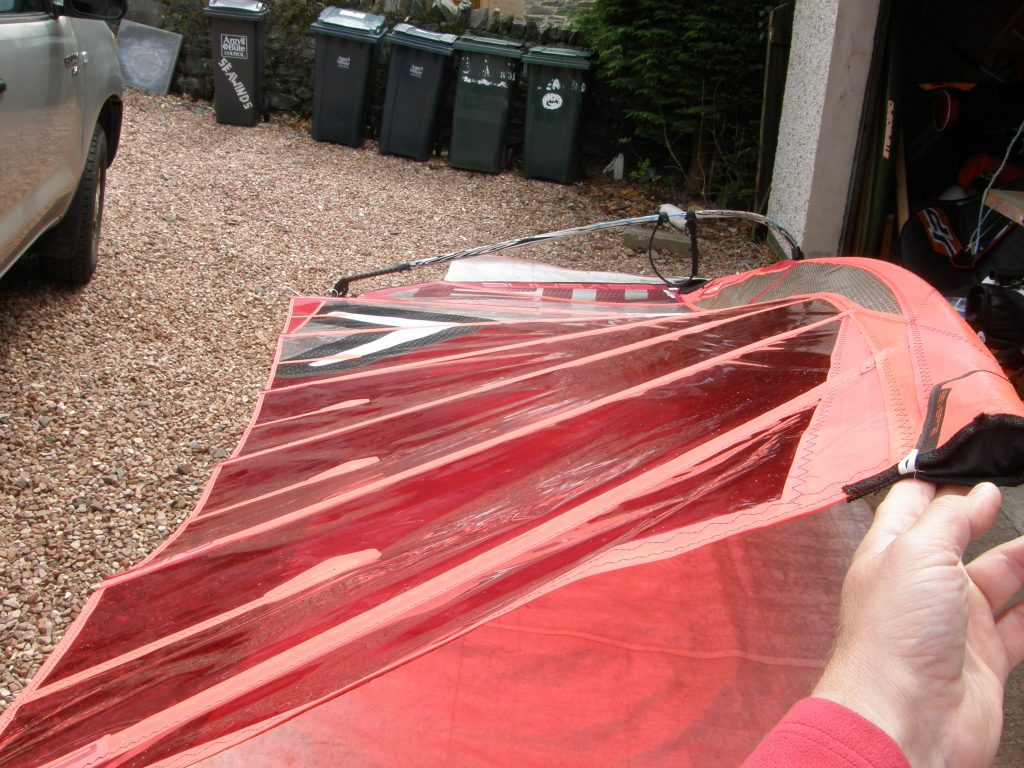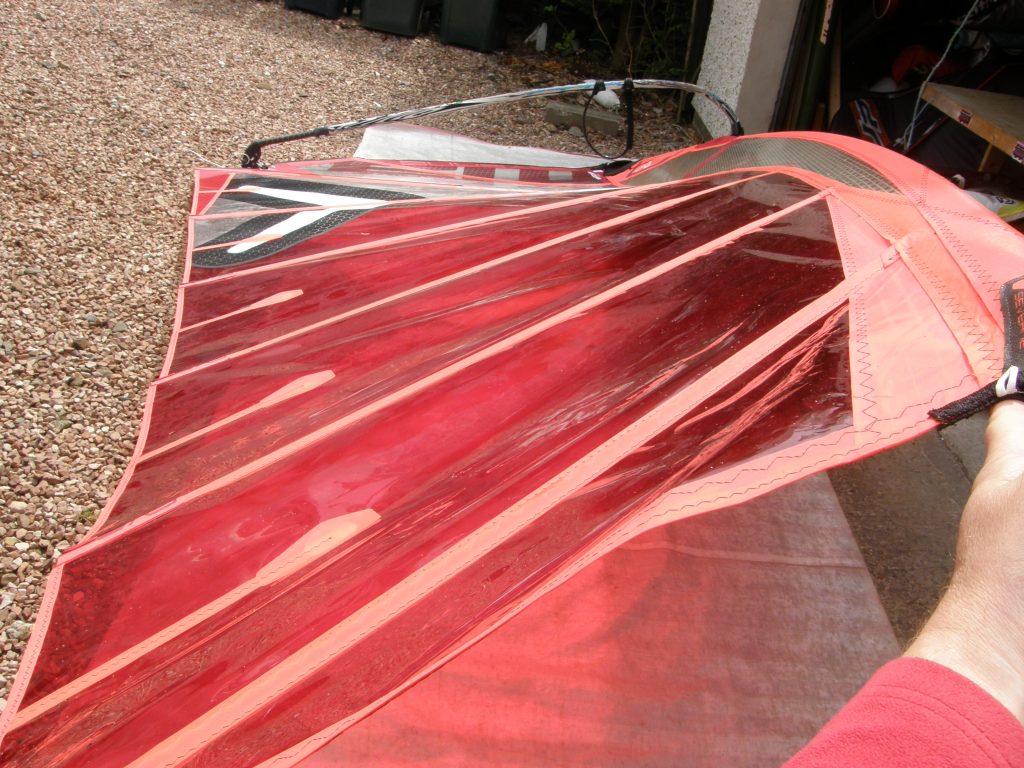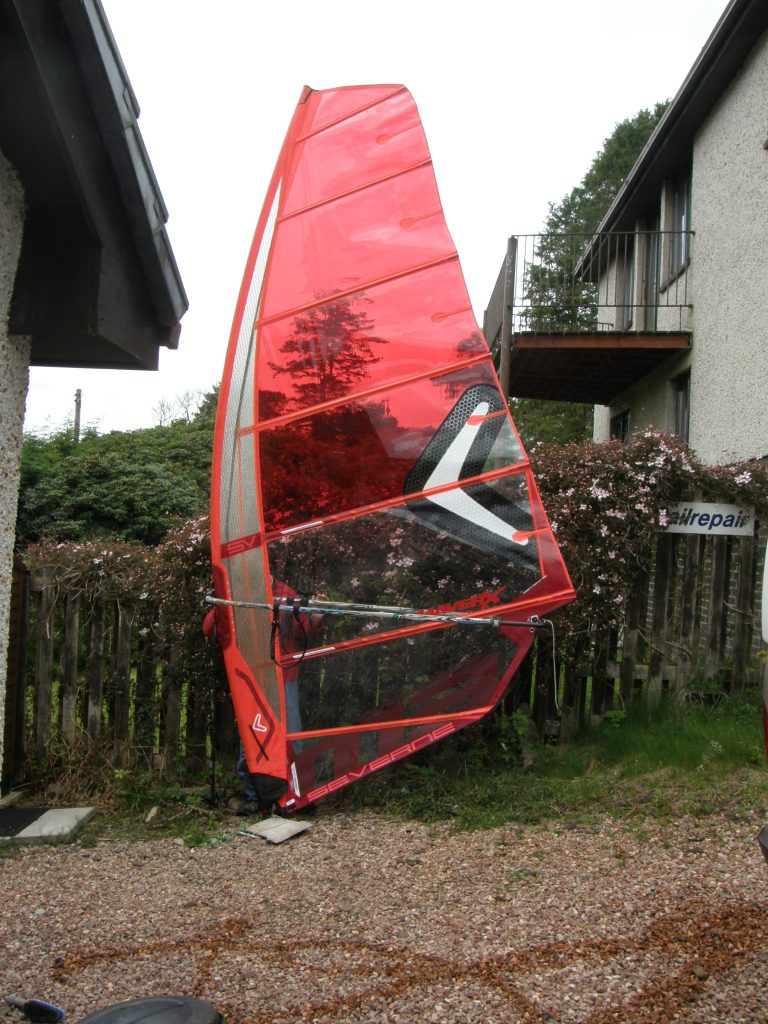Patrik Foil Ride 125
First impressions – A compact sized board at just 202cm long and 75cm wide. The boards rails are quite parallel meaning the board has a wide tail. The tail is wider than the tail on a 78cm wide JP hydrofoil 120. This review will compare the Patrik against the JP quite a lot since I have moved from the JP to the Patrik. I like the limited paint finish but that is partly because it is easy to do invisible repairs on such boards. Weight wise the board is about 0.25kg heavier than the JP so it sits between a JP and a AHD board for weight.
What is noticeable when setting up the board is the wide option of strap positions. On the JP I had the straps in the second from front hole. The same position on the Patrik relates to the 2nd from the back option. So the straps can be placed quite far forward on the board making it suitable to take both full race foils with their long fuselages and forward wing position as well as high lift foils such as the starboard super cruiser foil. Such foils quickly provide a lot of lift and the possible forward strap positions will help to tame forceful foils. While boards such as the AHD range also have their straps further forward they do not have the length of adjustment provided by the Patrik. On most boards the amount of adjustment to the footstrap positions is 4cm, on the Patrik it is 10cm which gives you a lot more tuning scope.
The rails are flat sided like a racing foil board which allows Patrik to get the volume into a small package.
The board is supplied with foil bolts but I replaced the rear bolt for one 5mm longer just to make sure I was getting full contact with the foil. This will depend on what foil you are putting in the board but be prepared to get a longer bolt if necessary.
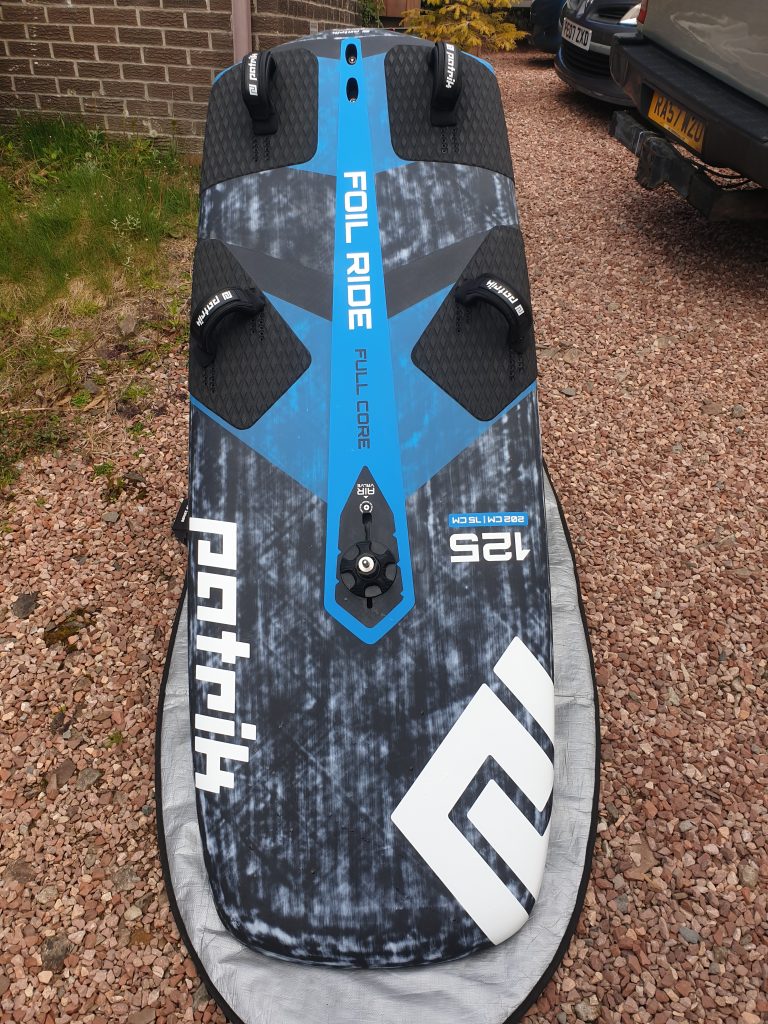
On the water – The foil ride feels true to its 125 litres and offers plenty of support for uphauling; you can even put your front foot in front of the mast foot when pulling the sail up. When chugging along waiting to fly the nose can submarine a bit as you would expect for a 2 meter board but it is easy to correct and only happens due to a lack of concentration.
Getting flying – The board responds best if you bare off the wind when pumping to fly. This is fairly standard technique as boards get shorter. The board takes to the air without much effort. There is plenty of width and volume in the tail allowing you to move back quickly and start pressuring the foil. When it is windy you don’t need to pump you can just drive the board off a piece of chop. I have used the board with an AFS W95 with R810 and R660 wings. The board matches the high aspect race wings but I can’t see why it would not also be a great board with a moderate or low aspect foil.
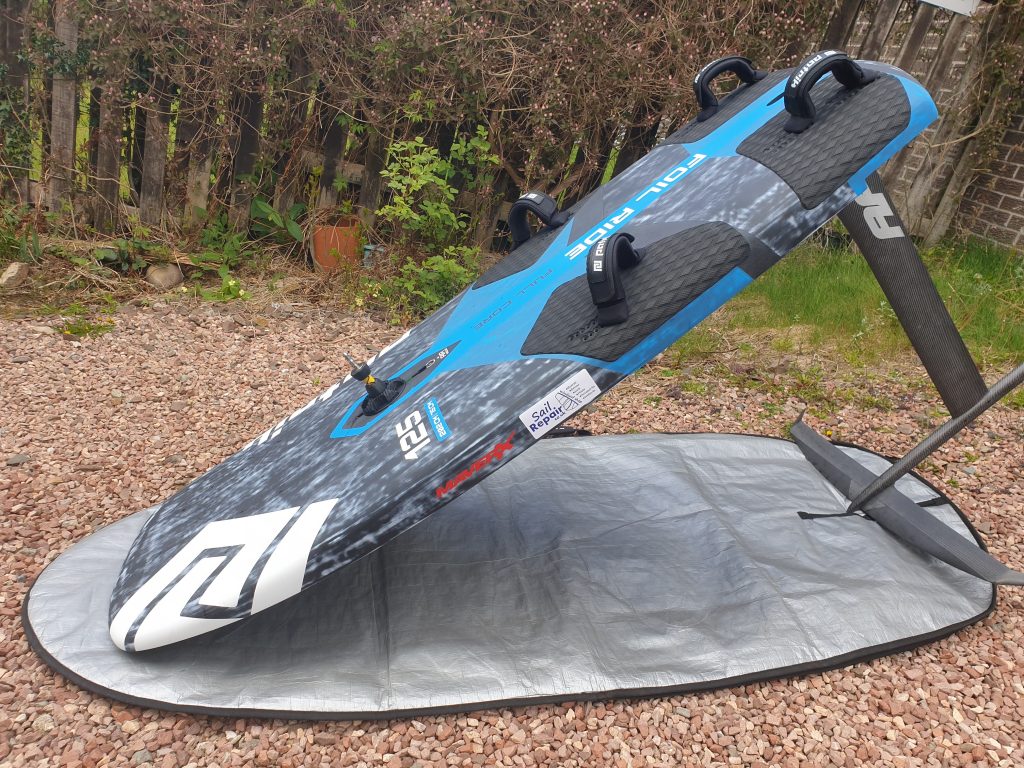
In flight – The board is comfortable in flight. With 6.5 and 7.0 sails I tend to sail it in both straps but it is still comfortable flying with your back foot more central on the board and out of the back strap. That is how I tend to fly with smaller sails and especially if I have too much sail power. I have had one session where I found myself way overpowered with a 4.7 in 25 to 30 kts. The board was easy to control and I would fly it hard upwind and then ride the small waves with the sail half sheeted out back to my start point and repeat. However you want to fly it, the foil ride is accommodating and comfortable.
Gybeing – Gybing as expected is straightforward, it is easy to adjust the flight height throughout the gybe. Even with the rear foot straps set inboard there is a large open working deck area so the boards can easily accommodate clumsy feet and it gives the space required if your back foot has to quickly move back to ensure a touch free gybe exit. Tacking is easy enough despite the relatively short length.
Overall – The Foil Ride is a very easy to use dedicated foil board it suits a wide range of riding styles and can handle a wide range of sail sizes. The board is also at home in a wide range of wind speeds, capable of taking flight in less than 8 kts and not out of place in 30kt winds and that is with the same foil! Highly recommended.
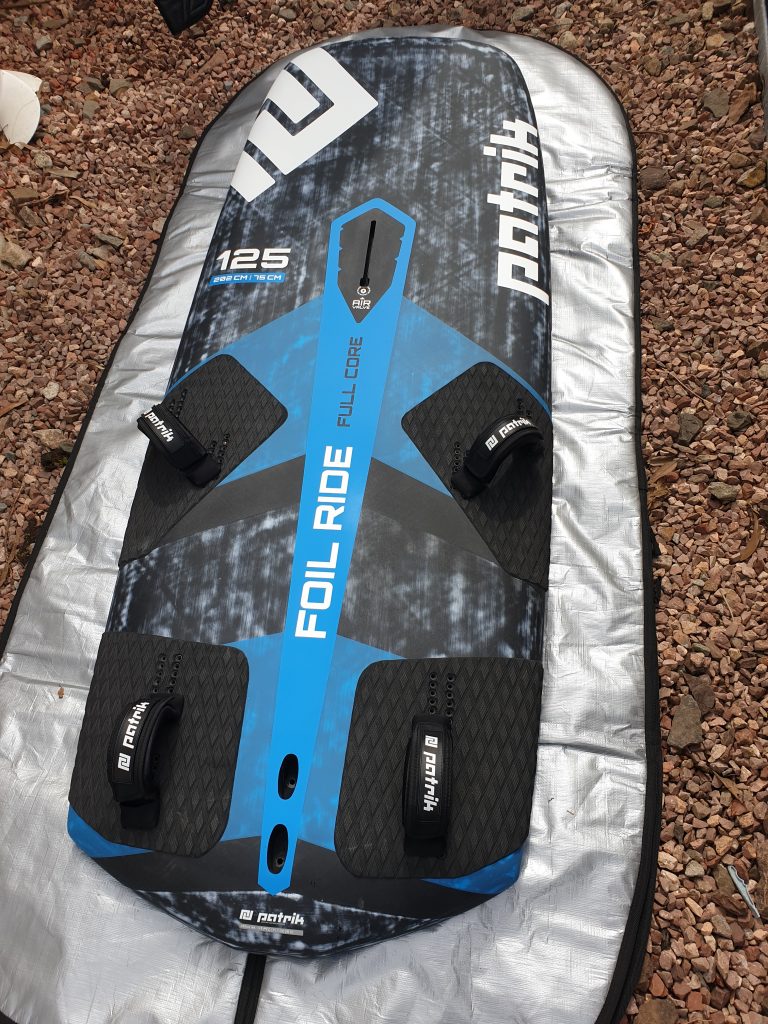
UPDATE
Patrik Foil-ride 105
I now have the Foil-ride 105. It looks and is a scaled down 125.
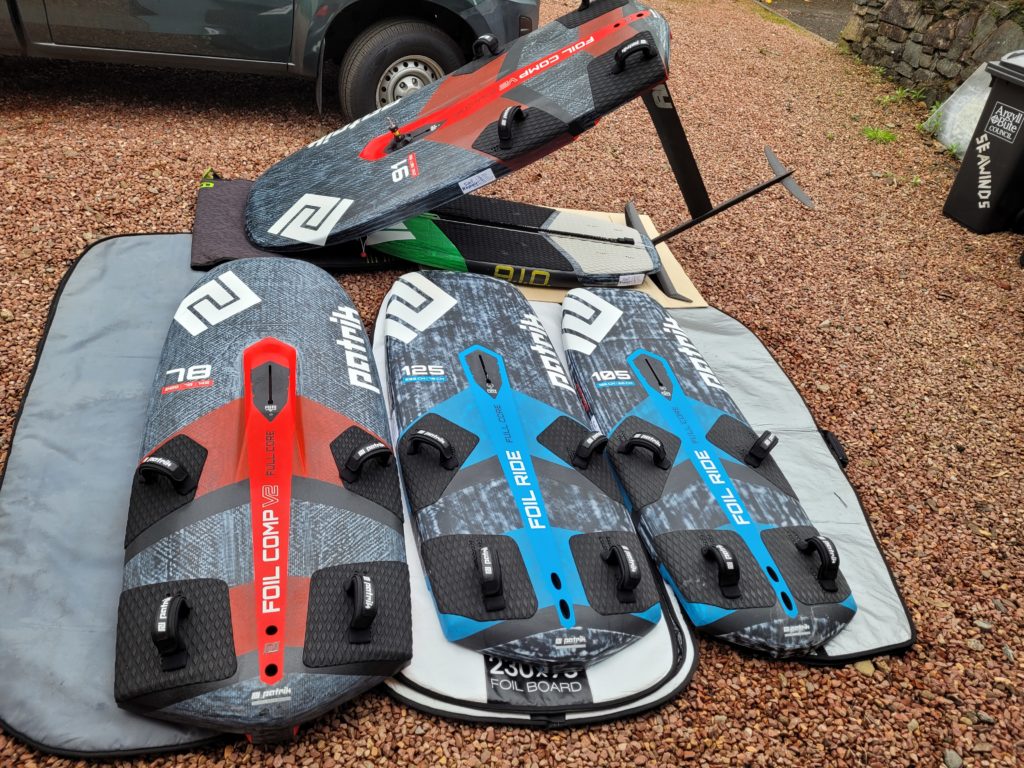
On the water – The 105 feels it has at least or maybe a bit more volume. At 95kg 105 boards are very boarder line whether they support me or not. The 105 offers more support for uphauling than I thought it would; you can even put your front foot in front of the mast foot when pulling the sail up. When chugging along waiting to fly the nose can submarine a bit as you would expect for a 195cm board but it is easy to correct and only happens due to a lack of concentration.
Getting flying – Even at only 65cm wide it is possible to sail with your front foot in the strap waiting for a gust. As soon as you bare off and start pumping the board and sail you feel a lot more connected to the foil due to smaller surface area under the board. The board has similar cutouts to the 125 but is only 65cm so when you push down the effort goes straight into the foil and less pushing onto the water. The board rewards good technique by flying early. I have used the board with an AFS W95 with R810 and R660 wings. The board matches the high aspect race wings but I can’t see why it would not also be a great board with a moderate or low aspect foil.
In flight – The board is comfortable in flight. With sails up to 6.5. The narrow width of 65cm is most felt when trying to point high. The board goes upwind fine but not like the wider foil boards. Unlike some other small foil boards the board is not unsettled by strong gusts.
Gybeing – Gybing is where this board comes into its own. There is less distance to move across the board making it feel more reactive. Tacking is possible for the brave.
Overall – The 105 Foil Ride is quite accessible to any sailor who has good mast pressure control. It maybe a small matter but the board is easy to carry when attached to the rig which makes launching easier which can make a big difference as the conditions get rougher. Like its big brother this board is highly recommended.
Video of the 105 – https://youtu.be/6uWdSjy1lmU

